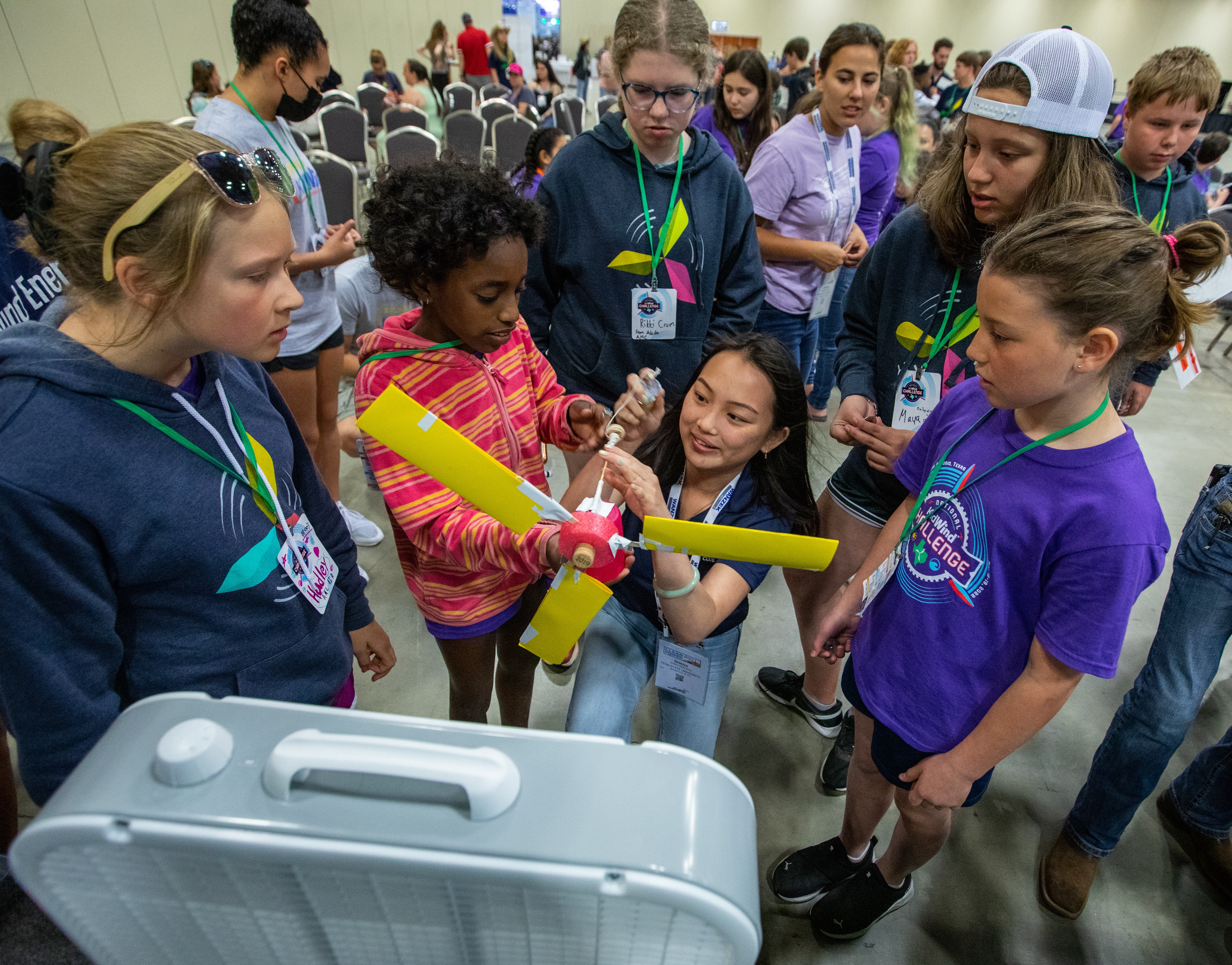How to Bring Wind Energy Back to School with You This Year
Sept. 12, 2023

Both the Collegiate Wind Competition and KidWind program host annual events where K–12 and college students design, construct, and test small-scale wind turbines. Photo from the National Renewable Energy Laboratory
This article was written for WINDExchange by Emily Mercer.
Wind energy planning and development is speeding up to meet the nation’s ambitious clean energy goals. In fact, the U.S. wind energy workforce will need to grow by an average of 15,000–58,000 full-time jobs every year from 2024 to 2030 to meet the nation’s ambitious clean energy goals, according to a recent report from the National Renewable Energy Laboratory.
Whether you’re a student or an educator, read on to learn how you can take advantage of this opportunity and help grow the next generation of the wind energy workforce.
Opportunities for Students
Participate in the Colligate Wind Competition
Each year, the U.S. Department of Energy’s Collegiate Wind Competition challenges teams of undergraduate and graduate students from colleges and universities across the United States to design, build, and test small-scale wind turbines. The competition aims to foster innovation and promote the development of wind energy technologies while providing students with valuable hands-on experience in the field of renewable energy. Participating in the competition is a great way to establish a deeper understanding of the wind energy development process.
Find a Wind Energy Training Program Near You
The wind energy industry is a rapidly growing sector that offers a wide range of job opportunities. Some jobs in the wind energy industry require trade school experience (such as becoming a wind turbine technician) while other jobs require an advanced degree (such as becoming an engineer or research scientist).
Before embarking on your wind energy education journey, be sure to check out the wind energy career map on the U.S. Department of Energy’s Wind Energy Technologies Office website to learn what types of degrees may be required for specific careers.
Additionally, WINDExchange provides an interactive map of wind energy training programs available across the United States. Using the map, you can easily locate wind energy-specific trade school or advanced degree programs at community colleges, universities, and other institutions.
Prepare for and Apply to Wind Energy Internships
Internships are a great way for college students and recent graduates to gain relevant experience, develop professional connections, and refine their career goals. However, internships in renewable energy can be competitive and require specific education or training. If you’re interested in landing a wind energy internship, it’s important to research what makes a successful applicant and apply to a wide range of positions. There are many federal renewable energy internship opportunities and programs you can consider, and be sure to research and connect with wind energy industry companies who may be hiring.
Tools for Teachers
Incorporate Wind Energy into Your K–12 Lesson Plans
Interested in teaching wind energy basics to your students but don’t have the resources to do so? We’ve got you covered! WINDExchange offers a list of wind energy curricula and teaching materials for elementary, middle school, and high school students.
Check out National Projects and Programs
There are several nationwide wind energy education programs and opportunities available to help educators encourage and develop the next generation of renewable energy workers. Visit our Education and Workforce Development page to find a full list of K–12 wind energy projects and programs.
Here’s a short summary of some upcoming opportunities:
-
Learn more about the 2024 REcharge Academy, which is a week-long clean energy educator training program hosted by the KidWind program.
-
Apply for renewable energy education funding opportunities for students and teachers such as travel scholarships, sponsored research projects, and project-based funding offered through the REpowering Schools Program. You can also nominate outstanding clean energy educators through the REpowering Schools Awards Program.
-
Meet other educators and collaborate with wind energy professionals at the North American Wind Energy Academy/WindTech 2023 Conference, which will take place Oct. 30–Nov. 1, 2023, in Denver, Colorado.
Are you a wind energy company looking to connect with student interns? Read our research-informed recommendations for finding applicants who have the education, training, and experience needed to do the job.
To learn more, visit the WINDExchange Education and Workforce Development page and subscribe to our newsletter to receive wind energy education and workforce updates and events.